Of all the images that circulate around to promote countries or specific corners touristically, few will be as spectacular as that of the Sanctuary of the Virgen de los Remedios with the Popocatepétl volcano behind, with its blanket of snow on top and sometimes even smoking. It is one of the icons of Mexico, a country where the main attraction lies in the ruins of pre-Hispanic civilizations and especially in the pyramids that remain standing. And it turns out that precisely the hill that crowns that Marian temple is not such but an ancient pyramid covered by vegetation as camouflage. And not just any one, but the one with the largest area and volume in the world:Cholula.
This municipality in the state of Puebla was once a sacred city, a function in which it had succeeded Teotihuacán, another place where there are two imposing pyramids of similar height that have a certain stylistic relationship. The Cholula one measures 64 meters (the Teotihuacan one one less) and although they are below the 70 of Tikal or the 76 of the Petén one (let alone the 146 of the Kéops in Giza), its true asset is found in its base of 450 x 450 meters and 4,500,000 cubic meters, which surpass all comparison.
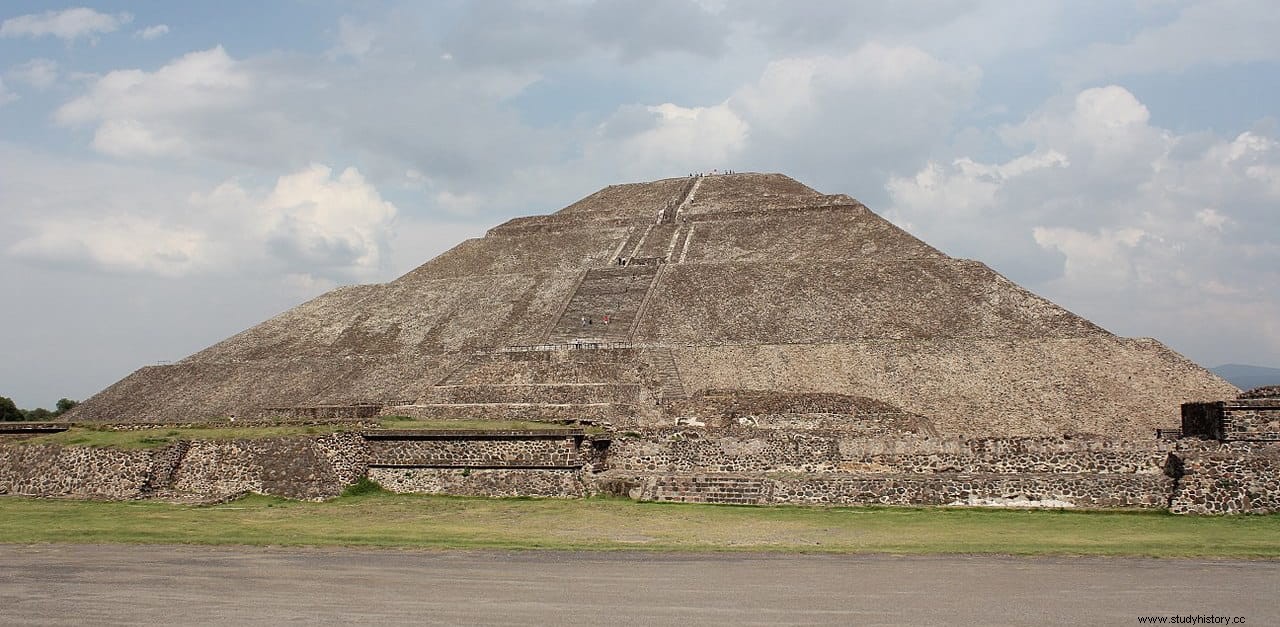
Curiously, the municipal term is divided into two parts, San Andrés and San Pedro, because of the two cities that originated in the 12th century AD. as a result of the Toltec-Chichimec conquest, which displaced the previously established Olmec-Xilancan culture to the south; or in more popular language, the Cholulteca invaders from Tollan against the native Colomoxcas. By then there was already a teocalli , of course, but the invaders built another in honor of Yacatecuhtli-Quetzalcoátl, whose location is now occupied by the monastery of San Gabriel, and they gave it the name of Tlachihualtépetl, which in Nahuatl means mountain made by hand. Cholula, by the way, derived from the term cholollan , that is, a place of refuge, alluding to that sacred character.
The mountain in question was not raised in two days but over a millennium, probably from the year 300 BC, since one of the great differences that the Mesoamerican pyramids had with respect to those of Egypt is that they were not definitive but they were expanding. with calendrical cycles. Four construction stages have been identified since the Preclassic, although local mythology attributed everything to a character named Xelhua, whose story surprised the Spanish due to its resemblance to the Genesis .
Indeed, it was said that there was a time 4,800 years after creation when the world was populated by a race of giants and Xelhua was the only one who managed to survive the floods caused by a deluge, thanks to the fact that he took refuge in a grotto that the god of rain, Tlaloc, had on a mountain. When the water level dropped, Xelhua began to build a great pyramid with adobes with which to reach the sky. This displeased the father of the gods, Tonacatecuhtli, who threw a stone into the air that killed many of the workers when it fell, stopping the work.
From what we see today, Xelhua had already made a base of 160,000 square meters when the divine hand put an end to his project, succeeding half a dozen superimposed structures, some with burials inside; up to four hundred have been found, mostly Postclassic. The use as a necropolis continued even when the Toltecs left the building aside to make their own. Upon the arrival of Hernán Cortés and his family, it was already semi-abandoned and covered in weeds and, obviously, nothing was done to clean it (it is said that the first to realize that it was a pyramid was Fray Toribio de Benavente), remaining that way until the 19th century.
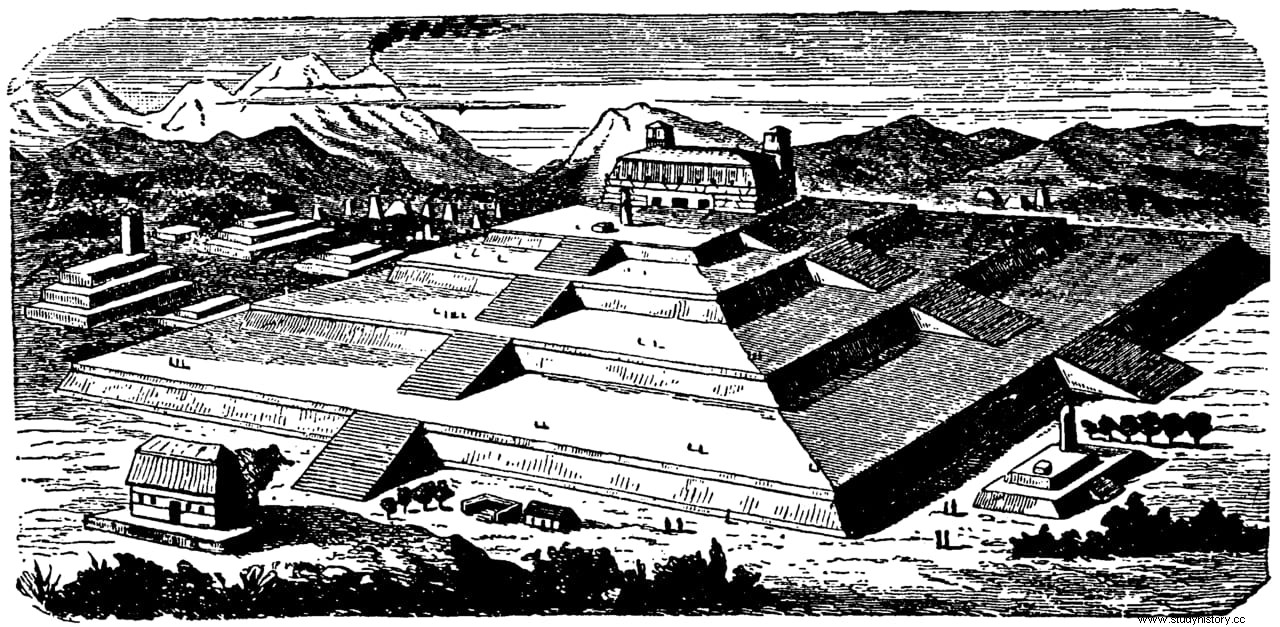
Cortés chose to travel to Tenochtitlán passing through Cholula because of the religious prestige that the site had, despite the fact that his Tlaxcalan and Totonac allies recommended him not to take that road because there was another shorter and more direct one; but, above all, because Cholula was a tributary city of the Mexica and could prepare a trap. However, the man from Extremadura insisted on continuing to show that he was not afraid of anything and because it was an important city, the second largest in Mexico with nearly one hundred thousand inhabitants.
The Spaniards were well received but the indigenous allies were not allowed to enter and soon some signs of a possible trap began to be revealed, although the matter was never entirely clear. Thus, the Tlaxcalans insisted that an Aztec army ready to fall on them had camped very close (the explorers sent to locate it found nothing) and in the urban area closed streets, hidden moats and parapets on the roofs were detected that gave a bad feeling. To the soldiers. Then there was the revelation of a Cholulteca a la Malinche (presumably in exchange for marrying her son) that, indeed, there was an ambush ready.
Informed Cortés, he decided to give an exemplary and preventive example, defeating thousands of Cholultecas in six hours (he himself and Bernal Díaz del Castillo refer to how the Tlaxcalans were especially harsh, taking advantage of the occasion to settle scores). Two weeks later, with that route of retreat secured, the Spaniards once again set out on the road to Tenochtitlán to meet Moctezuma, leaving the enclave divided into two ancestrally rival parts:the aforementioned San Andrés and San Pedro.
After the conquest, several attempts were made to demolish the pyramid, but with such dimensions it was such an arduous task that finally the most practical option was chosen:to place a Christian church on its apex (bear in mind that the pyramids were only structures to support a temple -or two- at the top), syncretizing the Virgin with the goddess Chiconauhquiauhitl, who was the one worshiped there right in the last pre-conquest stage (the Toltecs abandoned Cholula at the beginning of the 14th century). That was in 1594 and since then the site received more damage:some natural, because lightning and earthquakes almost destroyed the church; other humans, either during the colonial period, for the construction of the Camino Real to Puebla, or after independence, for a railway line.
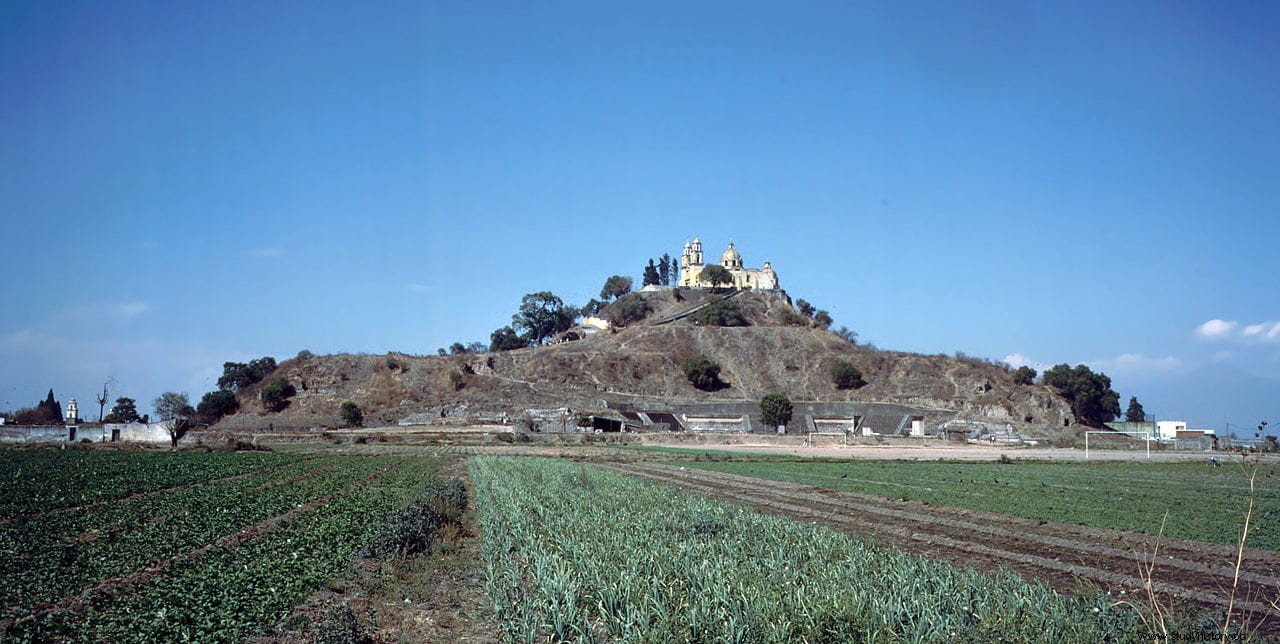
I said before that numerous burials were found, both in the pyramid itself and the archaeological area that surrounds it, since there is a group of associated buildings. Many of the recovered bodies show signs of having been offered, including several children. These used to be chosen for that ending because they were considered ixiptlas , that is, links between the human and divine worlds, especially conducive to pleasing Tlaloc; Let us remember that it is probable that a persistent drought, of which a record has been identified, originated the myth of Xelhua.
The archaeological zone covers 154 hectares and began to be studied in 1881 by the Swiss archaeologist Adolph Bandelier. The actual excavations were carried out in two phases. The first, between 1931 and 1954, was directed by the architect Ignacio Marquina in the difficult context of the Cristeros War. It consisted of the excavation of four kilometers (later that length would be doubled) of internal tunnels to access the substructures and that allowed discovering that the base was made of adobe bricks compacted with ceramics, gravel and obsidian; They also facilitated the extraction of various pieces (statuettes, musical instruments, weapons...).
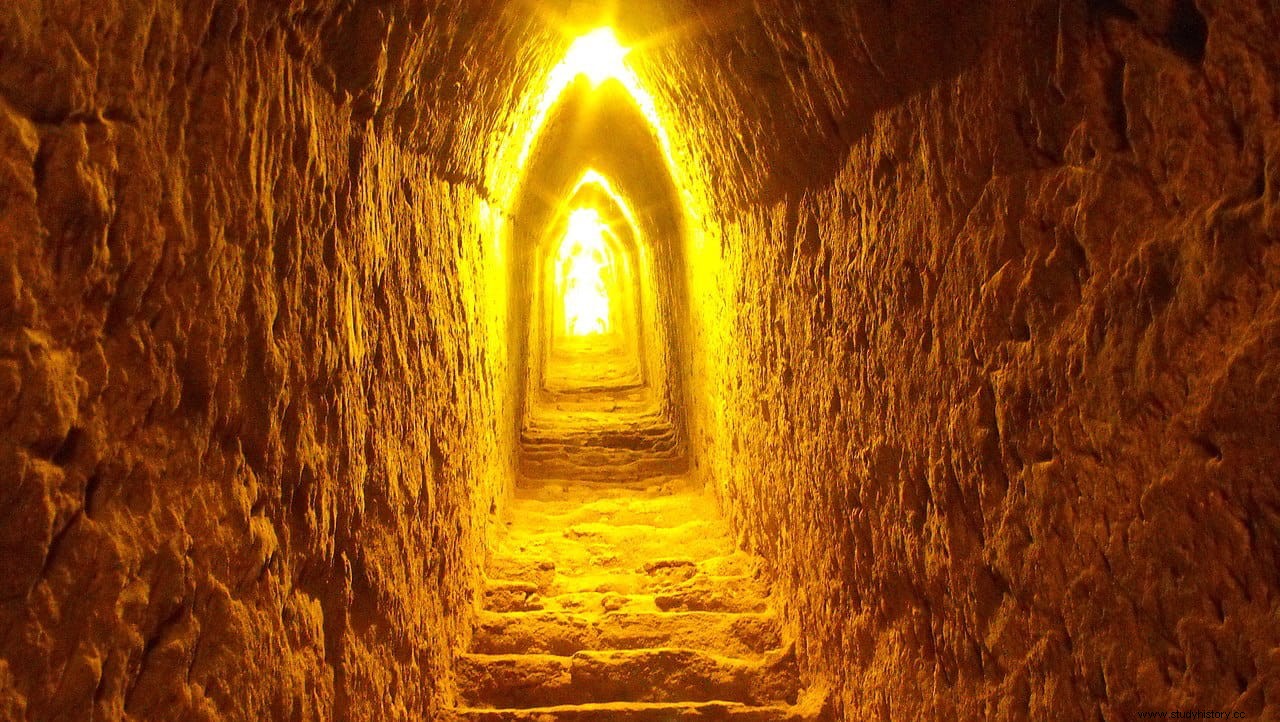
The second phase, baptized as Cholula Project and with government support, it lasted from 1966 to 1970 and was directed by Miguel Messmacher, with the collaboration of the now famous Eduardo Matos Moctezuma. During this period, some annexed buildings and patios were brought to light and the investigations were extended to other auxiliary fields, such as geology, botany or paleozoology. The idea was to rebuild the entire site, as had been done in other places to promote tourism, but it turned out to be impossible due to the complexity of what was appearing and interest was lost, causing the work to be abandoned.
That is why the Great Pyramid of Cholula remains unknown; Only three of the superimposed structures have been analyzed, those known as Building A or La Conejera (a work from the pre-Teotihuacan era), Building B or the Pirámide de las Calaveras Pintadas (Teotihuacan and whose name is due to the abundance of skulls as an artistic decorative motif) and Building C or Pyramid of the Nine Stories (from the 4th-5th century AD and named for its pictorial friezes).
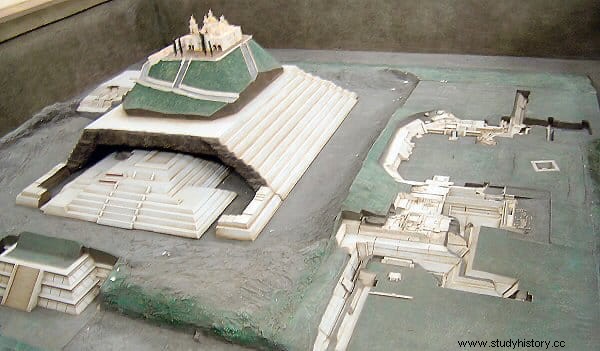
Of the enormous mileage of tunnels, only 800 meters are enabled for visits (although the route passes in front of the famous mural of the Pulque Drinkers) and you have to settle for admiring the mountain or its components, in the case of other murals such as that of the Chapulines, whose themes are obvious. Also worth mentioning is the Patio de los Altares, a group of buildings that serves as the main access, the ceremonial altar (of a set of four) or the rest of the architectural constructions that complete the site. There's also a museum, of course.
Of course, a visitor can also enjoy other things related to Cholula in general and the pyramid in particular. For example, September 8 is the birth of the Virgin Mary and consequently many religious festivals are celebrated in her honor. One of them takes place with the Virgen de los Remedios, the local patron saint to whom the pyramid church is dedicated, as the protagonist (remember, assimilated to Chiconauhquiauhitl). It is completed with a night event -the Procession of the Lanterns- on the 31st and, between May and June, with the Descent of the carving of the Virgin to walk her through the streets of the city.
Another festivity, with a different formal sign but a similar background, is the one that takes place on the spring equinox to honor Yacatecuhtli-Quetzalcoátl, with attendance as massive as the previous ones. On those days, the pyramid itself serves as the stage for a folkloric act that includes music, traditional dances and a firework display, in spite of some technicians who believe that the tremors from the explosions can cause damage to the tunnels. Things from the Cerrito , as the current neighbors call it.
